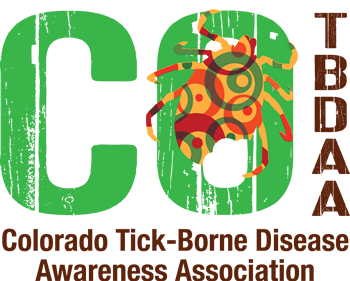
What Should You Know As A Patient?
What should you know as a patient?
Be Tick Aware!
- Many victims of tick-borne diseases never recall being bitten. Ticks secrete an anesthetic-like substance in their saliva that numbs the skin, so that you may not feel the bite.
- The size of some ticks that can transmit disease are as small as a poppy seed or the period at the end of this sentence. Ticks can be easily missed even with frequent tick checks.
- Ticks that cause Tick-Borne Relapsing Fever in Colorado and other western states often feed at night while their victim sleeps in rodent infested or previously rodent infested buildings. Unlike the more common hard-bodied ticks, these “soft-bodied ticks” feed quickly and then retreat (much like a bed-bug); people may not even know they have been bitten.
- Infections with Lyme disease and other tick-borne pathogens are increasing nationwide and worldwide. Researchers are discovering new, previously unknown species that cause Lyme disease symptoms as well as new pathogens that are causing additional diseases.
- Many tick-borne diseases can initially present as vague flu-like illness. Awareness of the varied symptoms and manifestations of tick-borne diseases can aid you in your consultation with your medical care provider in both diagnosis and treatment. Stay alert to your symptoms and write them down.
- Because early presentation of some tick-borne diseases and conditions may be vague, it is important that you share any exposures to ticks or potential tick habitats with your doctor.
Lyme & Tick-Borne Diseases/Conditions are a Global Issue
There are over 20 tick-borne diseases or conditions currently known to occur throughout the US that may affect Colorado residents and/or their pets. However, only 7 of these diseases are currently required physician/laboratory reportable diseases in Colorado.
Zoonotic disease reports in Colorado from 2014-2019 can be found here. Keep in mind, not all of the nationally notifiable tick-borne diseases are tracked or reported by the Colorado State Department of Health & Environment (CDPHE), leaving the incidence of infection for many tick-borne diseases unknown in Colorado.
Surveillance of ticks and tick-borne diseases is also lacking in the state of Colorado. Only one limited passive surveillance survey has been conducted by the CDPHE to date. There is much unknown about the occurrence of ticks species and their pathogens in Colorado.
Travel may increase risk. Individuals and their pets returning to Colorado from travel out of state or country may not be aware of their tick exposure or risk of diseases in other regions of the US or world. Colorado medical care providers are then faced with diagnosing diseases they may not have any previous experience with. It is important to notify a physician if you become ill after an exposure to ticks or their habitat. For instance, a flu-like illness following a camping trip even if you did not notice a tick-bite.
Lyme is the most prevalent vector-borne disease in the US; and ranks in the top 6 of all reported infectious diseases in the US behind, Chlamydia, Gonorrhea, Salmonella, and Campylobacteria. The CDC estimates that Lyme is underreported by a factor of 10 times. Using these estimates, Lyme disease would rank as the the third most prevalent notifiable infectious disease in the US.
Access to Care
Colorado is in need of more medical care providers, especially ER and primary care physicians, trained in the recognition, diagnosis and treatment of tick-borne diseases.
Treatment recommendations vary by infection and decisions regarding your course of care are best based on your individual presentation and response to treatment. These decisions should be made between you and your provider.
Ticks are capable of transmitting more than one pathogen in a single bite! Persistent symptoms after treatment for an identified or suspected disease may be due to additional unrecognized infection (co-infections) that may require extended or alternate treatment.
Guidelines for the treatment of Lyme disease are published by the International Lyme and Associated Diseases Society (ILADS).
If you are not receiving adequate care from your medical care provider and you suspect a tick-borne infection, you should seek consult from a physician trained in diagnosis and treatment of tick-borne diseases. Physician referral systems can assist in locating a Lyme Literate Medical Doctor (LLMD) experienced in the many presentations of Lyme and other tick-borne diseases.
It is rare to find an LLMD that works with insurance companies, and wait times for consult with one of these medical care providers is often lengthy. The earlier a tick-borne disease is diagnosed and treated, the better the outcome for the patient.
It is important to find a doctor willing to participate in a partnership with you in the treatment of Lyme and other tick-borne diseases and conditions; and that imperative that you be proactive about your health by being an informed patient.
The controversy and confusion about diagnosis and treatment for many of these diseases leaves some Coloradans undiagnosed, undertreated, and vulnerable to long-term, preventable, health problems from Lyme and other tick-borne infections. Education and awareness for both medical care providers and patients needs to be elevated in Colorado!
COTBDAA does not provide medical advice. Use of this site is for information only. Please consult your medical provider before making any decisions about diagnosis or treatment. COTBDAA does provide patient support to access resources. Please do not hesitate to reach out.







